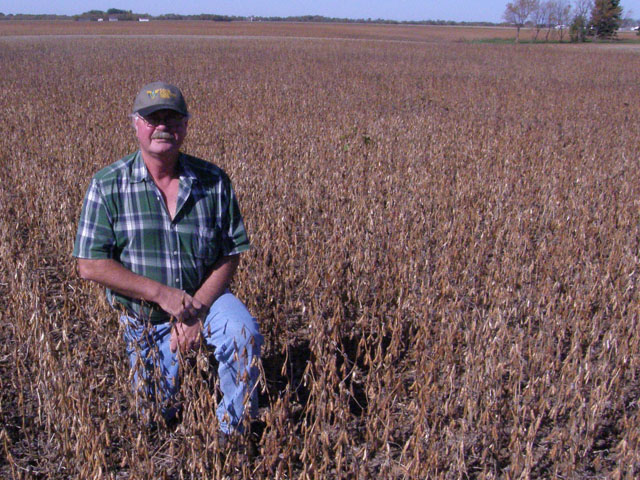C Corporations Lose Luster
Farmers Convert Out of C Corporations as Tax Benefits Erode
INDIANOLA, Iowa (DTN) -- When North Dakota farmer Chris Johnson first formed his farm corporation in 1991, corporate tax rates were lower than personal income tax rates.
"It made sense to put my farm business in a C corporation then," he said. Afterall, the federal income tax rate was only 10% for corporate income up to $50,000. For personal income, the federal tax rate was more than double the corporate income rate, 28% up to $50,000 of adjusted gross income and 31% above that.
A family farm with a corporate structure could also take advantage of deductible housing and other living expenses, and the C corporation structure was the main way farmers could limit their liability if they were sued until limited liability partnerships and S corporations were allowed in farming.
But in recent years, Congress has whittled away the tax advantages of C corporations. Higher corporate tax rates, reduced fringe benefits and disallowed Section 199A deductions have all played a part in eroding the popularity of C corporations.
The exclusion of the 199A (domestic production activities deduction, or D-PAD) tipped the balance for Perry Meyer, who farms in New Ulm, Minnesota.
"When the tax laws changed to no longer allow fringe benefit deductions and when they excluded the D-PAD deduction, I decided to switch from a C corporation to an S corporation," explained Meyer, who is in his third year of an S corporation.
He is not alone. There are now more S corporations involved in farming than C corporations.
Thirteen percent of the family farm production in the U.S. is structured as an S corporation, while only 10% uses a C corporate business structure, according to USDA's 2018 Agricultural Resource Management Survey. Fifteen percent are in a partnership. The vast majority of family farm production (61%) is in a sole proprietorship. USDA classifies the remaining 1% as "other," which includes estates, trusts, co-ops, etc.
If you look at farm numbers, rather than as a percentage of production, only 1% of U.S. farms are C corporations.
P[L1] D[0x0] M[300x250] OOP[F] ADUNIT[] T[]
ENDING C CORPORATION IS NOT EASY
C corporations are intended to live forever, even after you die, and simply liquidating a C corporation triggers double taxation. First, at the corporate level, then, at the shareholder level. If the corporation owns appreciated farmland, it can be prohibitively expensive to end it.
Kevin Bearley, tax attorney and estate planning consultant with KCoe Isom in Fort Collins, Colorado, provided this example.
Farmer A lives in Indiana and has been farming in a C corporation (FarmCo) for 30 years. He initially funded FarmCo with $1,000. He has no heirs wanting to take over the farm. His farm is now worth $12 million with land valued at $7 million (with a tax basis of $100,000), depreciable assets of $3 million ($0 tax basis) and growing and stored crops worth $2 million ($0 tax basis).
If he converted to a partnership, the total "gain" to FarmCo would be $11.9 million, triggering an estimated tax of $3,094,000 (21% federal rate plus 5% state rate). That would leave FarmCo with $8,906,000 of fair market value to distribute. That distribution (gain to Farmer A) would be taxed at 20% federal rate plus 3.8% net investment income rate plus 5% state rate. The total tax bill on his $12 million corporate conversion: $5,658,640, and that doesn't include selling anything for cash.
To take the sting out of converting a C corporation, the IRS allows businesses to convert the assets in a C corporation to an S corporation. Then, those assets must operate in an S corporation for at least five years, after which you can sell them for cash and not face double taxation. Bearley said farmers should be cautious because this takes careful planning and a knowledgeable tax adviser.
Bearley explained S corporations have a number of benefits:
1. Continued limited liability protection.
2. Similar filings and structures, although S corporations' fiscal year must end Dec. 31.
3. Pass-through tax treatment for income, loss, deductions and credits. This is especially important for 199A (D-PAD), Qualified Business Income (QBI) 20% deduction.
4. Distributions can be partially tax-free (to the extent of the investment), and a mix of salary and dividends can be reached.
5. Ownership can be transferred easily without triggering adverse tax consequences. This is especially important if the farmer wants to sell corporate-owned appreciated land.
6. If planned correctly, S corporate stock held until death can receive a step-up in basis and liquidation of the entity in the same year, potentially reducing the tax due. Congress is considering plans that could change the rules for stepped-up basis and capital gains. You can read more here: https://www.dtnpf.com/….
DON'T WAIT UNTIL YOU RETIRE
To switch from a C corporation to an S corporation and avoid double taxation, Bearley said you need two active businesses, and you need to be operating your farm and working the land for at least five years.
"Once you have your land in an S corporation, you can do some estate planning, especially if you have heirs who do not want to farm," Bearley added.
Lance Woodbury, family business consultant with KCoe Isom and columnist for DTN/Progressive Farmer, said continuity is the main advantage to retaining your farm in a C corporation. "I work with several extended farm family operations that appreciate the C corporate structure to provide the farm business a smooth transition to the next generation."
While C Corporations are loved by some, DTN tax columnist and CliftonLarsenAllen tax and farm transition specialist Rod Mauszycki said they've converted a lot of farming C corporations to S corporations in the last five to 10 years. "The S corporation structure simply gives most farmers more flexibility than a C corporation with transition planning and in regards to 199A."
(c) Copyright 2021 DTN, LLC. All rights reserved.



